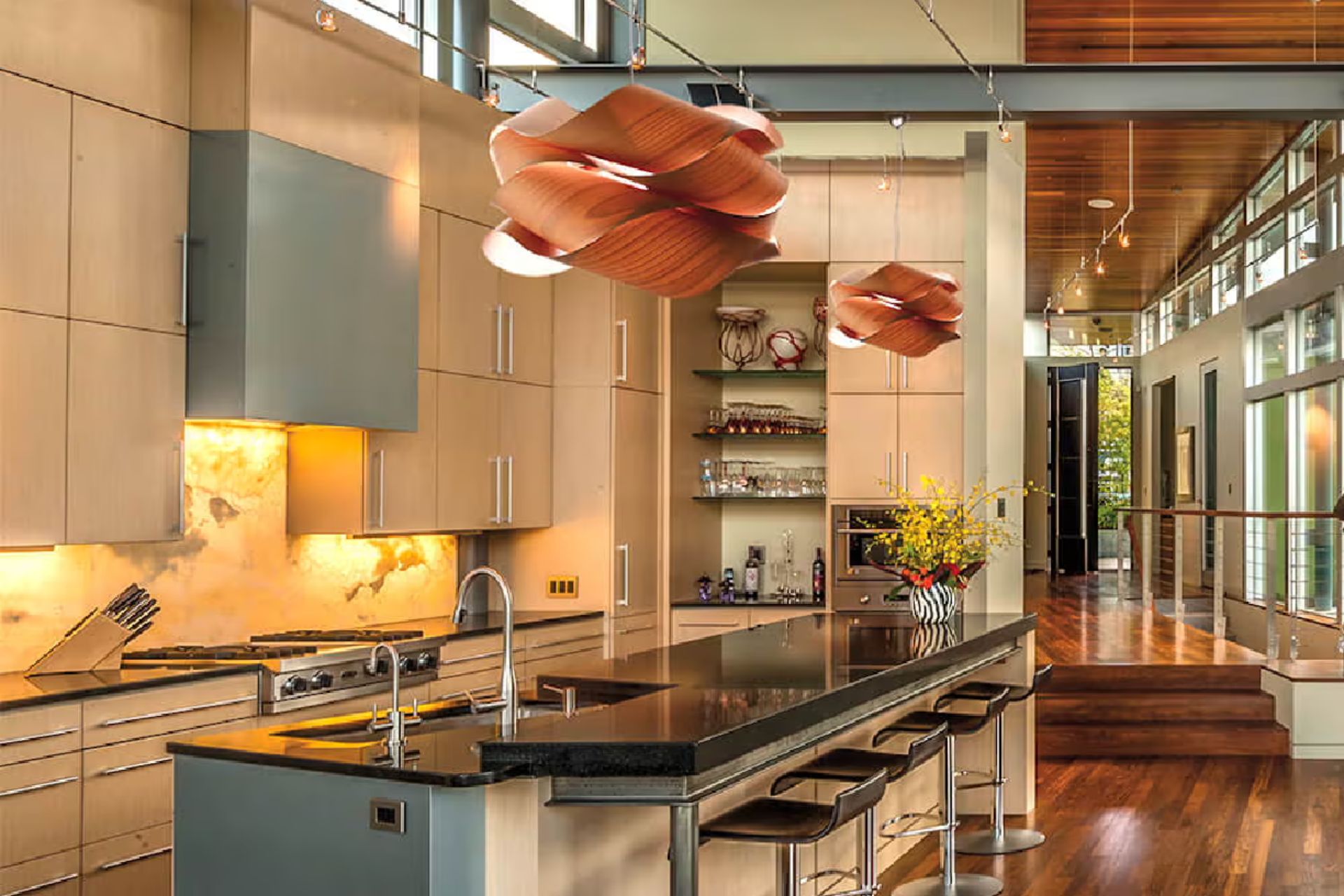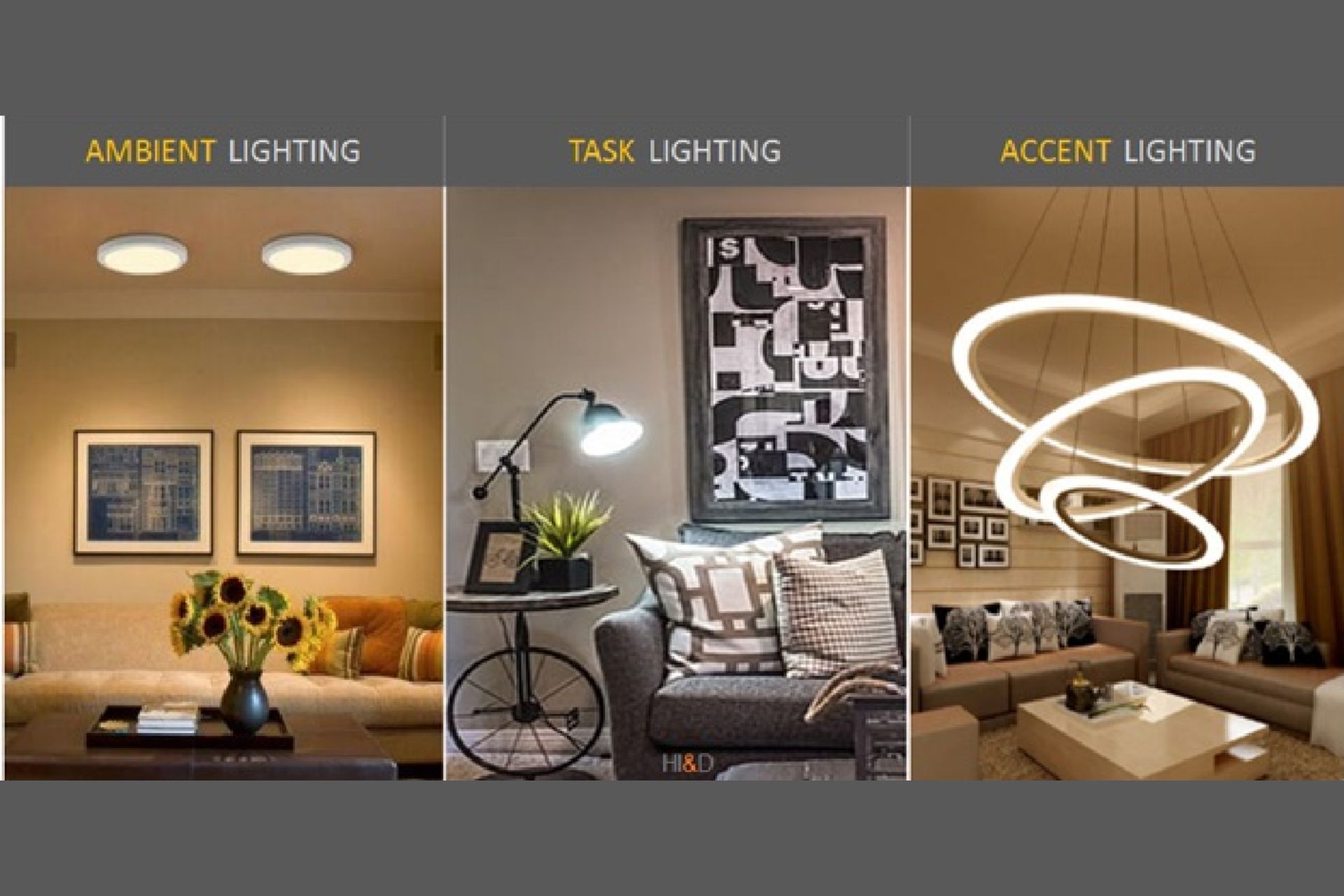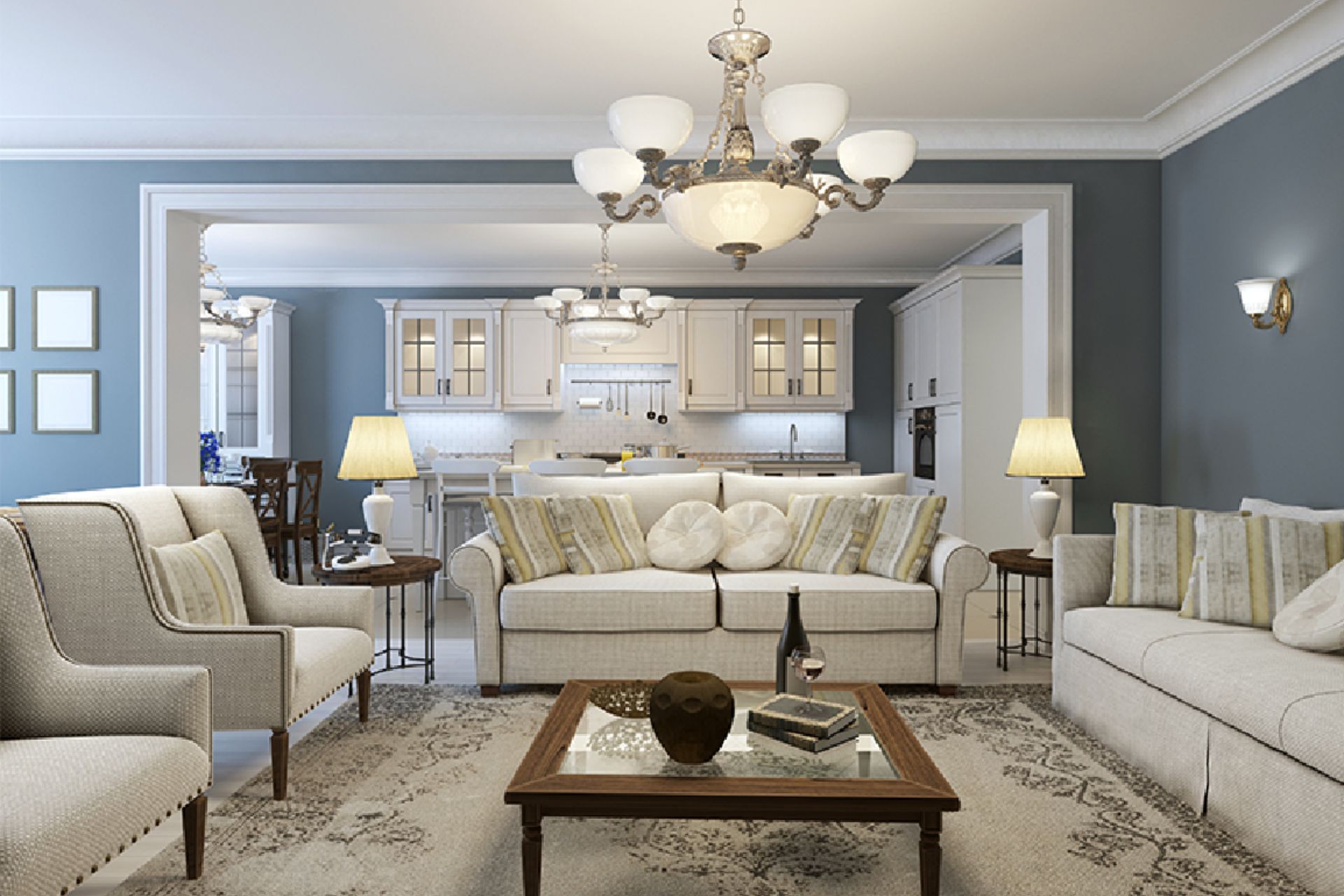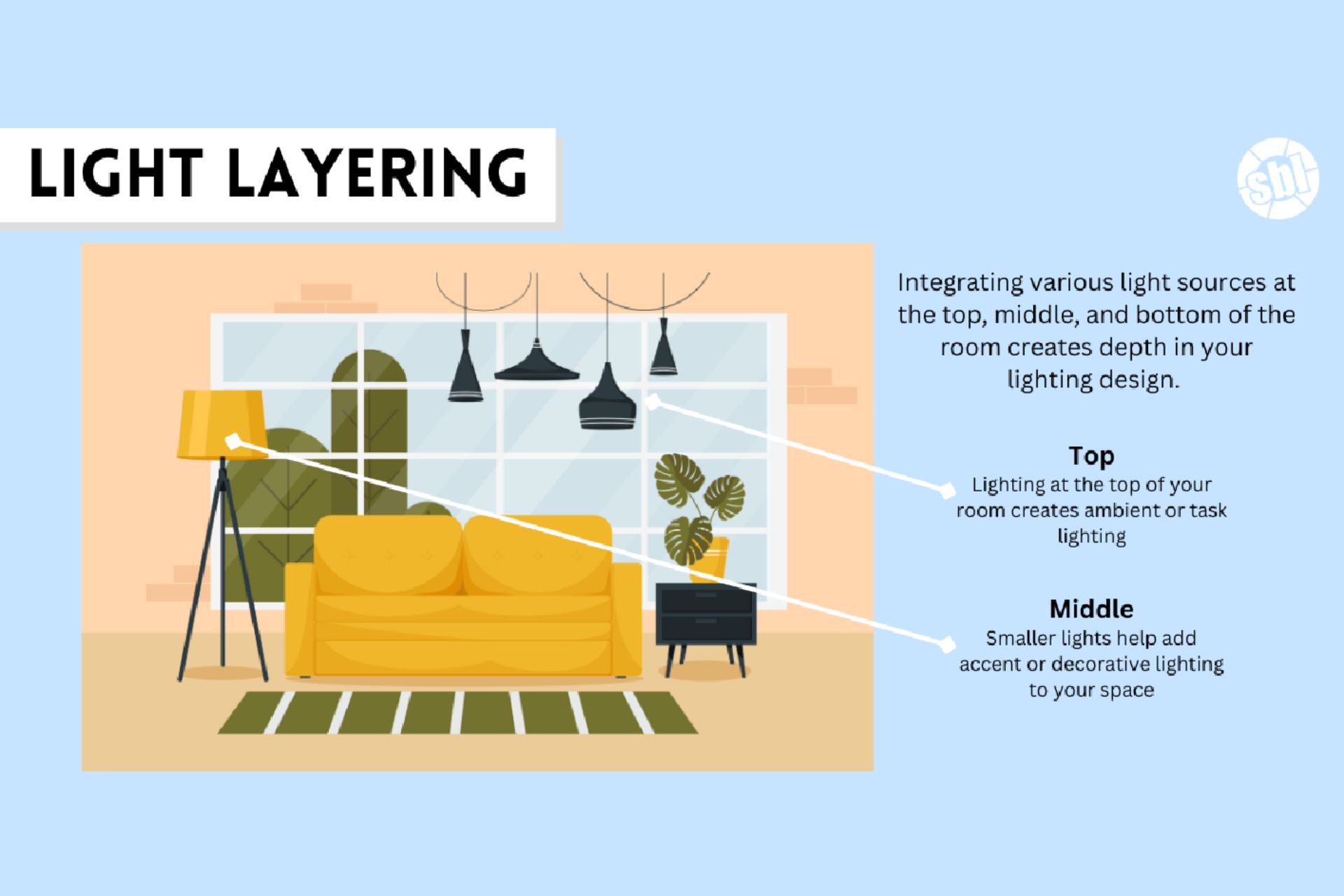
Lighting is more than just a means to brighten a room; it fundamentally alters how a space is perceived. It significantly influences our emotional and physical well-being, affecting our mood, productivity, and overall health. Smart lighting design can set the perfect mood and make any space more functional and enjoyable. This is particularly important in a home, which serves as a multi-functional space where we relax, cook, and interact with others. Hence, planning home interior lighting to cater to these diverse needs is essential.
Understanding Layered Lighting
Layered lighting is a comprehensive approach to interior lighting design that uses multiple types of lighting to create a balanced and versatile illumination scheme. This method includes three main layers: ambient lighting, task lighting, and accent lighting.

- Ambient Lighting: This provides general illumination, ensuring a comfortable level of brightness for overall visibility. It forms the base layer of lighting in a room.
- Task Lighting: Focuses on specific areas where activities like reading, cooking, or working take place. It provides concentrated light to enhance visibility and reduce eye strain.
- Accent Lighting: Used to highlight architectural features, artwork, or decorative elements, adding depth and visual interest to a room.
By combining these layers, a space can meet both functional and aesthetic lighting needs.
Benefits of Layered Lighting

Layered lighting offers numerous benefits, enhancing both the functionality and aesthetics of a home:
- Enhanced Ambience: Layered lighting allows for the creation of various moods and atmospheres within a space. Adjusting the intensity and color temperature of different light sources can make a room feel cozy, vibrant, romantic, or serene.
- Increased Functionality: Ambient lighting ensures general visibility, making it safe to move around. Task lighting is essential for activities that require focused light, such as reading, cooking, or working, reducing eye strain and improving productivity. Accent lighting can guide attention and define different zones within a room, making spaces more efficient.
- Energy Efficiency: Using the right type of lighting for specific tasks can lead to significant energy savings. Incorporating energy-efficient LEDs, dimmers, and smart lighting systems can reduce electricity consumption and lower utility bills.
- Aesthetic Appeal: Layered lighting highlights architectural features, artwork, and décor elements, creating focal points and adding visual interest. It provides design flexibility, allowing different layers of light to be adjusted for desired effects.
Steps to Design Layered Lighting in a Home

Designing layered lighting requires a strategic approach. Here’s a step-by-step guide to achieve this:
- Determine the Purpose: Understand how the space will be used to determine the appropriate types and levels of lighting needed. For example, a kitchen requires bright task lighting for cooking and food preparation, along with ambient lighting for general visibility. A living room might need flexible lighting solutions to accommodate different activities such as reading or entertaining guests.
- Plan the Ambient Lighting: Choose fixtures that distribute light evenly throughout the space, such as ceiling-mounted lights or recessed lighting. Ensure a well-lit environment without shadows or harsh glare. Consider the size and shape of the room to determine the number and placement of fixtures.
- Add Task Lighting: Focus on specific areas where activities like reading, cooking, or working take place. Task lighting should be brighter than ambient lighting and free of shadows to reduce eye strain. Examples include reading lamps, vanity lights, and pendant lights over an island or dining table.
- Incorporate Accent Lighting: Add depth and dimension to a room by highlighting architectural features, artwork, or other focal points. Use spotlights, track lights, and wall-mounted fixtures to create visual interest and drama.
- Use Dimmers and Controls: Incorporate dimmers and smart lighting systems to enhance the flexibility and functionality of your lighting design. Dimmers allow you to adjust the intensity of each lighting layer to create different moods and atmospheres. Smart lighting systems enable remote control, scheduling, and adjustment of color temperatures to align with natural light patterns.
Conclusion
Integrating advancements in technology with layered lighting can significantly enhance the experience of a space. Light automation solutions allow users to control lighting remotely via smartphones or voice assistants, enabling easy adjustments to brightness, color temperature, and even color. These innovations not only improve functionality and aesthetics but also promote a healthier and more enjoyable living environment.
